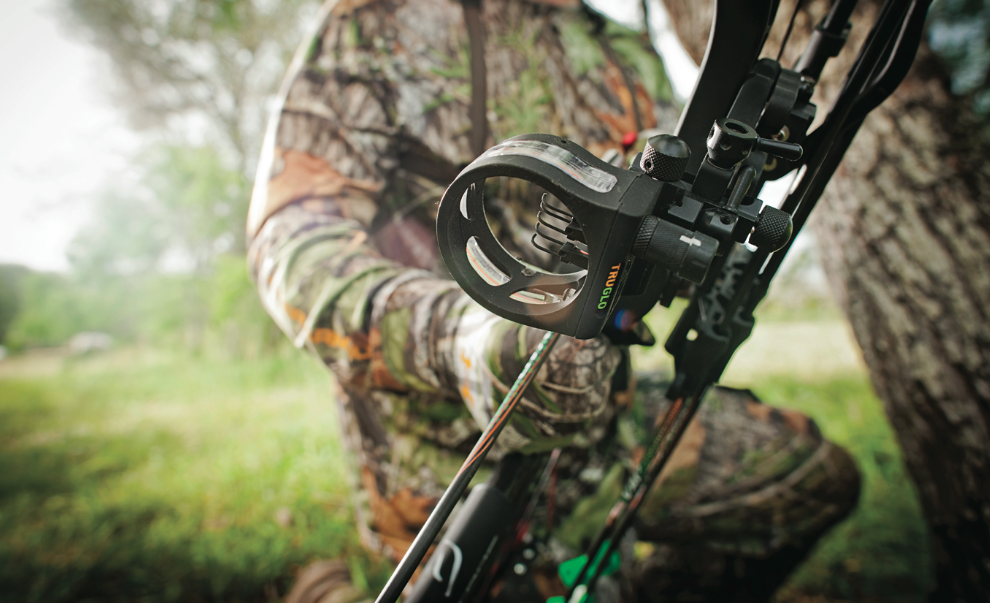We may earn revenue from the products available on this page and participate in affiliate programs. Learn More ›

Bowhunters are quintessential gearheads, which is just fine with accessory manufacturers that champion their products regardless of an individual’s bowhunting style or the game being hunted. Generally, it can all lead to mass confusion among bowmen who have a simple desire: to shoot a big-game animal with their hunting bow. To that end, it is important to get at least three parts of your equipment exactly right for how you hunt. Add to the list if you wish, but don’t mess up these essentials.
1) Pick the Appropriate Pins
Sight pins are the most misunderstood piece of archery equipment. Available in diameters from 0.010 to 0.019 inch, fiber-optic pins are a godsend, offering a clean and clear sight window, particularly in low-light conditions.
Generally speaking, thicker pins excel in low light and close quarters—treestands and ground blinds—where typical shots are short. They glow intensely under thick, brushy canopies where ambient light is at a premium. Because these large-diameter pins can obscure the target, animals must be close.
Conversely, thin pins excel in spot-and-stalk conditions and when shooting at ranges of 40 yards or beyond. Their diminutive diameter provides a cleaner sight picture.
2) Buy the Right Broadheads
Celebrity endorsements sell broadheads. However, your buying decision should be based on your bowhunting needs, not a toothy grin. Broadheads are available in three styles: cut-on-contact, fixed blade, and mechanical.
If you shoot a low-poundage bow (40 to 55 pounds), consider cut-on-contact heads, which feature excellent penetration despite limited driving force. For heavier draw weights (55 and up), fixed-blades prove durable and fly true when you take the time to set the bow up correctly. Mechanicals, with their minimally exposed blades, stand out when a particular bow refuses to fly other heads consistently. However, their exaggerated cutting diameters have a propensity for deflecting on steeply angled shots.
3) Choose the Best Rest
For bowhunting, there are only two styles of arrow rests you should consider: containment and drop-aways rests. For those who shake when confronted with a gnarly buck (or a scrawny doe), a containment rest is what you should be shooting. Its gentle grasp of the shaft while drawing buffers arrow shake and mutes arrow-to-rest chatter. Additionally, containment rests hold the arrow in place no matter the bow’s orientation―a bonus if you prefer sitting with your bow in your lap.
A drop-away rest features little or no arrow-flight interference—an advantage when making long, precise shots.

